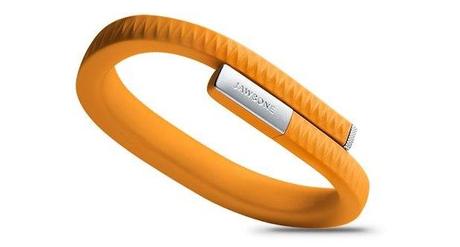It’s been good for other startups since then, like Jawbone, who have produced their own smart wristbands. Not only does the Jawbone UP track the user’s level of physical activity, it also alerts the user if they’ve been sedentary for too long throughout the day. The Jawbone device has a TRS plug, which can be used to connect with an iPhone to transmit data collected during the activities. With Nike Fuelband heading for product discontinuation, Jawbone becomes the most prominent health tracker in the market.

And now, Apple is hoping to penetrate into this burgeoning new market with their iWatch. The device isn’t currently available for the consumer market, but is being used in trials on professional athletes, with Kobe Bryant being a prominent early adopter. It’s been rumored that Apple is trying to recruit a roster of top level athletes from every major sporting league to perfect their hardware. This would provide them the opportunity to test the hardware while professionals are conditioning their bodies (and will potentially also open up opportunities for celebrity endorsements).
The iWatch will come equipped with 10 unique sensors, and will supposedly monitor everything from the wearer’s hydration and glucose level, to blood pressure fluctuations, to respiration issues, to sleep. It should be available to the public around October of this year. Apple has also made headlines for their Healthkit app, which offers users some of the data that the wearable device will help to collect more comprehensive data about.
Meanwhile, the folks at Google have been developing Android Wear, which is an operating system compressed into a watch that comes equipped with a pedometer (which counts the overall number of steps the wearer takes throughout the course of the day) and a sensor that measures the user’s heart rate. The new version of Android will include Google Fit, which will offer its own set of metrics (steps taken, hours slept, et cetera) in a similar way to Apple’s Healthkit.
Long term, platforms such as this could offer tremendous value to the healthcare industry. For instance, Google allegedly plans to integrate Fit with data from Practice Fusion, who are a huge electronic health record company connected to over 100,000 medical professionals. As the technology advances, there are greater and greater efforts made to integrate the technology into the infrastructure of hospitals. After all, with all of the data being collected, why not use it in a way that could benefit patients directly?
“Doctors are getting on board with these new technologies because of the potential to collect more patient data, and also because of the possibility that healthy habits can be cultivated more easily through wearables and mobile apps,” says Tim Cannon of HealthITjobs.com.
Relying on self-reported data about diet, exercise, and more might be a thing of the past, while being able to instantly and accurately track and compare a patient’s heart rate or blood oxygen level over time may become the new norm. “We could be looking at a true sea change in how patients interact with their doctors.”
It will be interesting to see what further advancements tech developers make in the years to come. It’s also encouraging to see that, beyond whatever immediate benefit these devices offer to fitness enthusiasts looking to improve their workout, these advancements could theoretically enrich the health care industry wholesale.

